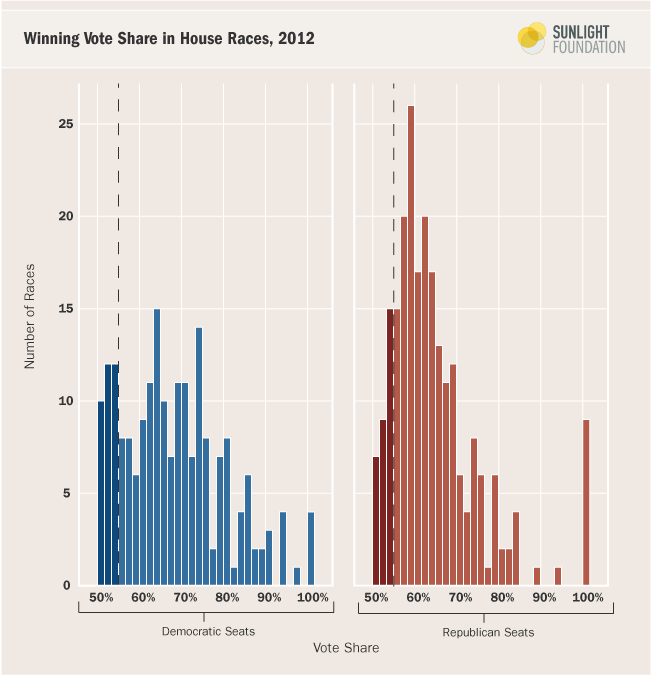The Politics of the Government Shutdown – In One Chart
As the government shutdown begins, so does the blame game. Is it Republicans’ fault? Democrats’ fault? While the endless speculation keeps pundits busy, it’s important to remember that members of Congress don’t care about “the public” in the abstract. They care about the public in their district.
We say “district” because any deal to re-start the government will require agreement by both the House and the Senate. While senators, with their broader constituencies, have to worry more about voters in the center, no such pressure exists for most House members. A quick analysis finds roughly seven in eight House Republicans (86.6 percent, to be exact, or 201 of 232) won with at least 55 percent of the vote in 2012. Additionally, 140 Republicans (60.3 percent of the caucus) won with at least 60 percent of the vote. The chart below shows the distribution of seats by margin of victory. Note: most Democrats also come from safe seats.

So even if polls show “the public” blaming Republicans more than Democrats, most Republicans come from districts that they won solidly. They don’t feel like they have to worry what the broader public thinks. They have to worry what the people back home think.
For many House members, particularly those on the right, the greatest threat that they face is a primary challenge from the far right wing of their party. Regardless of how the politics play out in “the public” of national polls, Republicans are mostly going to blame Democrats, and Democrats are mostly going to blame Republicans. If you are a GOP House member in a pretty safe seat, your voters are right behind you. You are not likely to feel any pressure to compromise.
Graphic by Alexander Furnas

